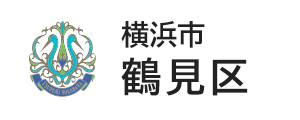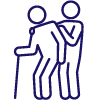- Yokohama-shi Top Page
- Tsurumi Ward Top Page
- Introduction of the ward
- Overview of Tsurumi Ward
- History of Tsurumi Ward
- 10th: About the memorial monument for railway accidents in the precincts of Omotoyama So Mochidera Temple
Here's the text.
10th: About the memorial monument for railway accidents in the precincts of Omotoyama So Mochidera Temple
Last Updated July 9, 2024
There is a memorial monument for the dead of the Sakuragicho accident and a memorial monument for the Tsurumi accident in the precincts of Soto sect Motoyama So Mochidera.
Memorial for the Dead of the Sakuragicho Train Accident (Statue of Kanzeon Bodhisattva, Sakuragi)
The Sakuragicho accident occurred at around 1:45 p.m. on April 24, 1951, just before the five-car train Moha 63 of the Japanese National Railways (currently JR) Keihin Tohoku Line entered Sakuragicho Station. A vehicle fire broke out due to an electric short circuit. The fire burns the first car in an instant and spreads to the second car. The second car was burned half-burned, resulting in a catastrophe of 103 dead and 95 severely injured. At that time, the accident was elevated and further problems with the structure of the vehicle were pointed out.
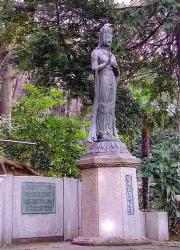
The Moha 63-type train was a wooden vehicle manufactured in 1944 during the war with a simple design to save materials. There were four entrances to reduce the number of seats by half to carry as many passengers as possible, and to speed up getting on and off, but no emergency door cock was installed as it is now. The window was a small three-tiered window, about 29 cm above and below, to save glass. The accident caused a vehicle fire, and the flammable wooden vehicle quickly turned into a sea of fire. There were as many as 150 passengers on the first car closest to the ticket gate at Sakuragicho Station. Even if you try to escape to the second car, you will not be able to open the door with full passengers. It was the first catastrophe since the history of the Japanese National Railways because one adult could not escape even if he kicked the window.
After the war, the Moha 63 train was mass-produced to replenish war vehicles and left a great achievement in reconstruction, but it happened to be defective in this accident. Immediately remodeled (installation of passages and emergency door cooks between vehicles, remodeling of windows, flame retardation of vehicles, strengthening of pantograph insulation, etc.), the Moha 72 shape Moha 73 shape was born.
To pray for the happiness of the people of victims who died in the Sakuragicho accident, Sakuragi Kanzeon Bodhisattva was erected on April 24, 1952 by the then Tokyo station manager and the chairman of the Japan National Railways union. The statue was created by the voluntary offer of the sculptor Shinpei Akahori. The name of "Sakuragi Kanzeon Bodhisattva" and the names of the victims are played by Sogen Asahina, director of Kamakura Enkaku-ji Temple. Sakuragi Kannon Bodhisattva was built.
Tsurumi accident memorial monument
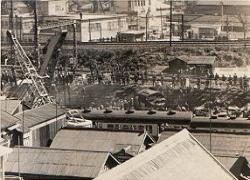
The Tsurumi accident means that at 9:40 pm on November 9, 1963 (1963), the Japanese National Railways (currently JR) Tokaido Line Shinkoyasu and Tsurumi, about 500m from the Takisaka Fudo Crossing between Shinkoyasu and Tsurumi on the Japan National Railways (currently JR) Tokaido Line. The Yokosuka Line crashed down the Yokosuka Line, which collided overturned overturned overturned on the Yokosuka Line. The accident caused a catastrophe that killed 161 people and 119 people seriously injured in victims.
According to a person near the accident site, when the accident occurred, a big ground called "Goon" sounded. I heard screams. It was like a hell picture. A medical rescue team from the Japan Red Cross also came and sent blood to the injured. The locals were also helping with their blood. The body was carried to Sojiji Temple.
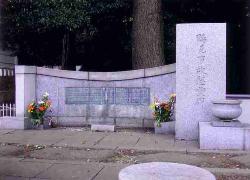
The cause of the accident was the so-called competitive derailment of freight trains (not the sole factor of vehicles, tracks, cargo, operation status, overcrowding, but the derailment of these factors competing).
In order to investigate the cause, the Japanese National Railways installed an experimental line on the old line between Ochiai and Shintoku on the Nemuro Main Line in Hokkaido, conducted various tests, and clarified the competition derailment that is said to be riddled in the world railway world. As a result of efforts, it reached a tentative conclusion in February 1972. During this time, emergency accident prevention measures were taken, and based on these tests, permanent accident prevention measures were taken.
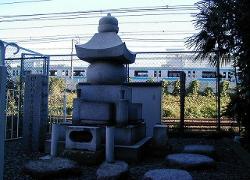
The Tsurumi accident memorial monument that occurred on November 9, 1964 is engraved with the names of 160 deceased people. The word "Tsurumi Accident Memorial Monument" is the brush of Zen Master Sojiji, 18th-generation Soho. There is an Olympic memorial tower at the site of the accident.
Partly quoted from "History of Photography of Japan National Railways 100 Years".
Responsibility: Masami Hayashi, Vice Chairman of the Tsurumi History Society
Inquiries to this page
Tsurumi Ward General Affairs Department Ward Administration Promotion Division
Telephone: 045-510-1680
Telephone: 045-510-1680
Fax: 045-510-1891
Email address: tr-kusei@city.yokohama.lg.jp
Page ID: 571-520-125
